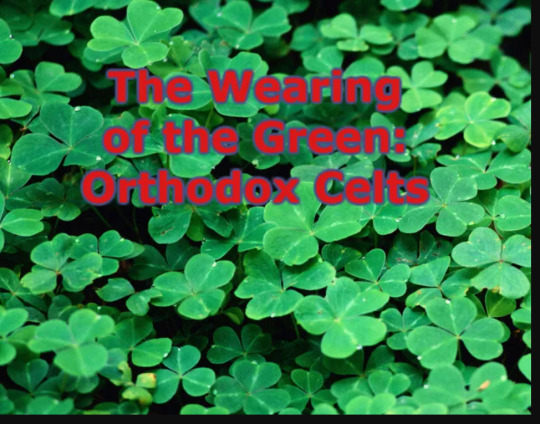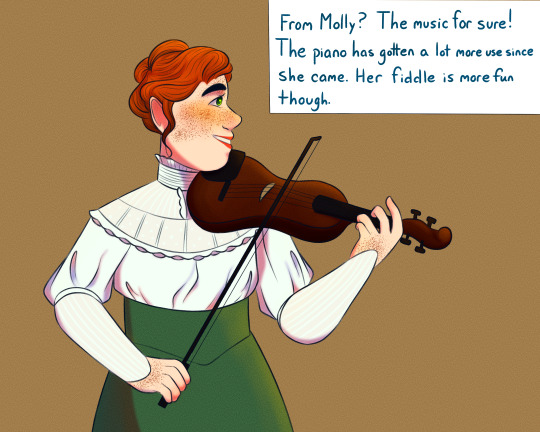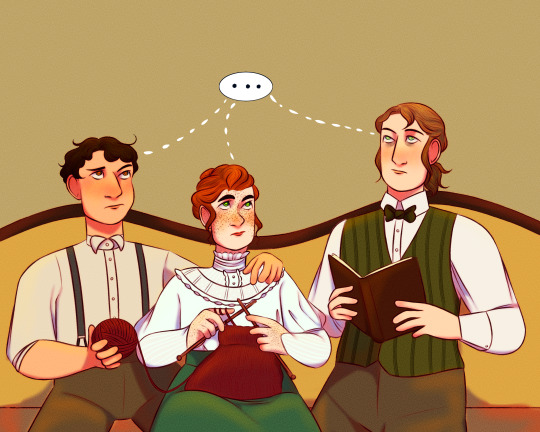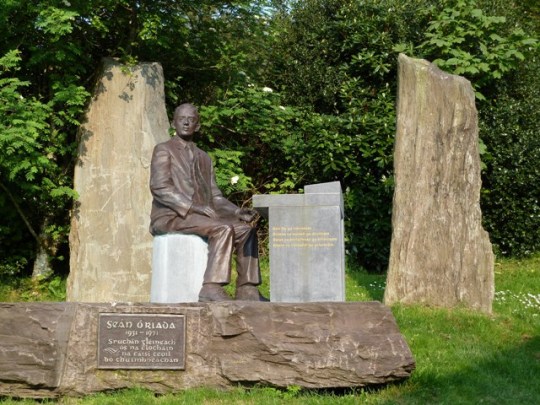#Traditional Irish Music
Text
I love the bodhrán in this song ❤️
#Lasairfhíona Ní Chonaola#De Thaisme#Traditional Irish music#Ceol traidisiúnta Gaeilge#De thaisme means by accident#Spotify
5 notes
·
View notes
Text
#OTD in 1971 – Death of Seán Ó Riada, founder, composer, and arranger for the Chieftains.
A true Irish Gift to the world, Seán Ó Riada left the world at the terribly young age of 40.
One of Ireland’s finest composers and a major influence on traditional Irish music, Seán Ó Riada (John Reidy) was born in West Cork in 1931. Ó Riada’s love of music came from parents who were both competent traditional fiddlers.
“My father had a wonderful store of music. I remember him telling me that he…

View On WordPress
#Ceoltóirí Chualann#Chieftains#Composer#John Reidy#Mná na hÉireann#Seán Ó Riada#Traditional Irish Music#Women of Ireland
7 notes
·
View notes
Text
The old dog is done
They killed him off when he was only young
Till that soil to heal your soul
Till that soil to heal your soul
#the scratch#old dog#red enemy#acoustic#heavy metal#dublin rock#traditional irish music#punk rock#m text#music rec#SORRY IVE HAD THIS SONG ON REPEAT ALL DAY#Spotify
0 notes
Text

The Wearing of the Green: Historical Context
https://www.thisdrinkinglife.com/wearing-of-the-green/
0 notes
Text
Sexiest man alive x
Sound on for this one. I love how he makes the concertina breathe.
#Other Voices#Cormac Begley#Trad#Traditional Irish music#Concertina#Music#Trad music#Folk music#LOVE#ireland
1 note
·
View note
Text
youtube
0 notes
Text
Ok, I know Luigi isn't Irish, but I am so...

Watch "This folk song is completely stuck in my head now" on YouTube
#traditional art#luigi#my au#Bowuigi#Bowser's Dad#irish folk music#seriously listen to this song#it's absolutely beautiful#older Luigi#super mario au#comic panels
458 notes
·
View notes
Text
Source
A lovely battle between Basque dance association Oinak Arin from Beskoitze (Lapurdi) and the Irish dancers of the Gohery school of dancing. Filmed last summer.
The Basque and the Irish sharing our special connection again!
#euskadi#euskal herria#basque country#pais vasco#pays basque#eire#ireland#irish dance#euskal dantzak#tradition#folklore#music
2K notes
·
View notes
Text

The warm September air was full of tantalising aromas, which combined to create an intoxicating perfume that nothing bottled by a human could ever hope to reproduce.
Algy flew over to a small rock where some late heather was still blooming, and took a big, deep breath. He could smell the heather, and the bog myrtle too, but strongest of all in the autumn sunshine was the fragrance of the wild thyme.
Algy just couldn't help himself. He opened his beak as wide as he could and started to sing one of the most famous and popular of the Scottish/Irish folk songs, which is so well known that at any concert in the Celtic countries where it is performed, the entire audience invariably join in. All together now…
Will ye go lassie, go?
And we'll all go together
To pluck wild mountain thyme
All around the blooming heather
Will ye go lassie, go?
[This is the chorus of the traditional Scottish and Irish folk song known as Wild mountain thyme or Will ye go, lassie, go? which was made famous world wide by recordings from the mid 20th century onward, but whose origins go back in both Scotland and Ireland to previous centuries.]
There are many recorded versions of this song by people both famous and unknown, but Algy hopes you will enjoy this one, which builds up to quite a climax from a quiet opening. This is an Irish version, but the singing, the instruments, and the scenery in the video would not be very much different here in Scotland:
youtube
Footnote for those interested, from Wikipedia:
"Wild Mountain Thyme" (also known as "Purple Heather" and "Will Ye Go, Lassie, Go?") is a Scottish/Irish folk song. The lyrics and melody are a variant of the song "The Braes of Balquhither" by Scottish poet Robert Tannahill (1774–1810) and Scottish composer Robert Archibald Smith (1780–1829), but were adapted by Belfast musician Francis McPeake (1885–1971) into "Wild Mountain Thyme" and first recorded by his family in the 1950s.
While Francis McPeake holds the copyright to the song, it is generally believed that rather than writing the song, he arranged an existing travelling folk version and popularised the song as his father's.
Tannahill's original song, first published in Robert Archibald Smith's Scottish Minstrel (1821–24), is about the hills (braes) around Balquhidder near Lochearnhead. Tannahill collected and adapted traditional songs, and "The Braes of Balquhither" may have been based on the traditional song "The Braes o' Bowhether".
#Algy#photographers on tumblr#Scotland#wild mountain thyme#will ye go lassie go#celtic women#scottish folk music#irish folk music#Scottish Highlands#singing#traditional music#heather#wild thyme#adventures of algy#original content#jenny chapman#celtic music#celtic revival#folk songs
51 notes
·
View notes
Note
Alfred, what is your favorite thing each of your roommates has brought over to your country? And to Ireland, Romano, and Lithuania, what is your favorite thing about America? (the country not Alfred.)



As for the others...


Alfred can afford to be a little more idealistic, but that's just his way.
**Historical Note: Though immigrants from each of these groups contributed in a variety of ways, these are some of the ways in which they contributed most prominently.
Irish Americans were incredibly active in the entertainment industry, especially in music. Irish Americans were very prominent in vaudeville, and eventually Broadway. However, this was due to a pre-existing music tradition that stemmed from Irish immigrants bringing over their folk music. Many Irish airs became popular parlor songs in the UK, America, and Canada. The strong Irish presence in the Union Army during the Civil War also further popularized folk songs such as "McLeod's Reel." Though the Potato Famine caused the decline of traditional music in Ireland, many songs and playing styles were preserved by Irish Americans in the United States and later carried back to Ireland in the 1890s-1920s when recordings began to become accessible. These recordings were also among the first to be sold in the United States.
Italian American cuisine is one of the most influential marks left by the community, especially from Southern Italians. Many innovations in Italian cuisine occurred in the United States, and many Italian immigrants became successful restauranteurs. This explosion occurred due to previously inaccessible foods suddenly being affordable in the United States, such as meat and imported cheese. Today, Italian American food is still one of the most popular cuisine choices in the United States.
Though all of the groups mentioned had involvement in labor union activity, Lithuanian Americans were particularly prominent activists. One of the most famous of these activists was Emma Goldman, but there were several others who formed the United Mine Workers and the Amalgated Clothing Workers Union. Sydney Hillman, a Lithuanian immigrant, was the head of the Amalgated Clothing Workers Union from the 1910s to the 1940s. Even in fiction, in Upton Sinclair's The Jungle, Lithuanian workers and their union activity are the central focus. Lithuanian Americans' strongest import really seemed to be their activism!
For all of these groups though, one big part of what made American so attractive was the comparative plenty to what they had in their countries of origin. Though many immigrants worked long, difficult manual labor jobs, they were able to afford new goods in the United States that had previously been unimaginable. This is mostly due to the United States' ability to produce goods en masse, which made them cheaper. Furthermore, in Ireland and Southern Italy, land ownership had become virtually impossible (through landlords hiking rent prices in Ireland or land distribution after the Risorgimento in Italy). Even if their positions were not enviable in the United States, from a financial standpoint, their salaries and the resources available put them in a slightly better position.
#hetalia#historical hetalia#hws america#hws romano#hws lithuania#hws ireland#nyo!ireland#immigrant trio#immigrant squad#hetalia ask blog#ask#last seminar my paper was on how the irish diaspora changed and preserved traditional music#so if i pop off a lot about that in the historical notes that is why (it is a roman empire in my brain of sorts)#this was a fun ask though! sorry for taking so long to answer!!
76 notes
·
View notes
Text
Hozier intros "Like Real People Do" with a verse from the Irish traditional "I am Stretched on Your Grave"
Oct 29, 2023, San Diego (his "Halloween" show)
73 notes
·
View notes
Text
#OTD in 1971 – Death of Seán Ó Riada, founder, composer, and arranger for the Chieftains.
#OTD in 1971 – Death of Seán Ó Riada, founder, composer, and arranger for the Chieftains.
A true Irish Gift to the world, Seán Ó Riada left the world at the terribly young age of 40.
One of Ireland’s finest composers and a major influence on traditional Irish music, Seán Ó Riada (John Reidy) was born in West Cork in 1931. Ó Riada’s love of music came from parents who were both competent traditional fiddlers.
“My father had a wonderful store of music. I remember him telling me that he…

View On WordPress
#Ceoltóirí Chualann#Chieftains#Composer#John Reidy#Mná na hÉireann#Seán Ó Riada#Traditional Irish Music#Women of Ireland
3 notes
·
View notes
Text
i just came across ai covers on youtube and people are requesting songs in the comments instead of getting enraged and i am further losing hope in humanity and turning to misanthropy
#meins#for a minute i got really excited about henning may singing take me to church :(#i hate people#have you no appreciation for or understanding of art? clearly not.#why would you want to listen to an ai generated song? even if it sounds like your favourite singer it's not them#it has no feelings to meaning to intention. it is empty and soulless#reading the booklet for sinéad o'connor's album of traditional irish and folk songs gave me so much appreciation for her#she wrote a little bit about each song. why she chose it or what it means to her.#it has added so much to my enjoyment of those songs and i think of it whenver i listen to it#they were chosen with intention with love with a deep appreciation for the music and lyrics and there is a story behind it all#it is art and love and human#i see aboslutely no appeal in ai generated 'music' or 'art'#and i hate that i fell for it for a minute#i was sceptical because i had never heard of henning may covering hozier and since it wasn't just 20-60 sec i am certain#i would have heard about it by now#and something was just a little bit... unsatisfying? something was missing which does apply to a lot of cover songs#(i could go on hour long rants about why people fuck up danny boy (and sinéad o'connor does it best (because she actually takes her time)#or trash madonna's version of don't cry for me argentina (again a song ruined for by everybody else but sinéad - once she has sung somethin#i have a hard time enjoying it by anybody else. the parting glass is an exception. hozier's version is phenomenal))#but! henning may not giving it his all for a cover? unlikely. very unlikely.#anyway this concludes my tuesday night rant. rather here in the tags than some poor person's inbox.#or i would have kept fuming by myself for another hour or two
18 notes
·
View notes
Note
I’ve been listening to Willie Taylor by Martin Simpson but can’t find much information about the ballad’s origin, do you know anything?
Suggested Song
(do you want the history of your favorite folk song? dm me or submit an ask and I'll do a full rundown)
youtube
"Willie Taylor"
Martin Simpson, 2016
Upon hearing this song, it stuck out to me for a few reasons. the active character of the song is a crossdresser, this song and its relatives are about a woman crossdressing as a man to find her husband, and in some versions, she doesn't even care that her husband remarries and attends their wedding positively. and often she marries the ship Captain and they live happily together. In my opinion, this puts it in or adjacent to the category of transgender history. Very fascinating for a folk song .
"Willie Taylor" is a rendition of the traditional English Folk song "William Taylor", (which is the oldest song I have covered on this blog) was first published in a chapbook in London in 1712 (I couldn't find a digitized copy) and would continue to be published up through the 1800s. The first publication I could find and show you is from 1792 in the chapbook "Four New Songs". in this, it is titled "Billy Taylor"

The Earliest sheet music I could find is from 1895, Collected by Frank Kidson

and here's its melody
This song also seems to be related to another song about a crossdressing sailor woman called "The Rambling Female Sailor" collected here in the 1860s by Frank Kidson, but they are classified as different songs.


The oldest recording is from 1908, which can be found here
the earliest recording I could find that is available is from 1938, performed by George Vinton Graham
here's another version from 1967 by Hedy West
While in most modern (1860s onward) versions, the song is comedic, originally it was completely serious and genuine. this folk song from the early 1700s if not older, presented a crossdresser as a sort of folk hero, a figure that people would sing about with veneration. That's amazing to me.
I think it would be fun to reimagine the song as either: the woman cross-dresses as a man and runs away with her husband's woman after killing him as a butchfemme relationship, or the woman could be reinterpreted as a transgender man who runs away and falls in love with the ship captain. idk I just think these would be cute fun new renditions.
#suggested songs#martin simpson#folk#traditional folk#irish folk music#sea shanties#english folk#irish folk#hedy west#queer folk#transgender history#folk music#trans history#lgbtq history#queer history#butch#folk history#music history#history#1700s#1800s
4 notes
·
View notes
Text
The Dubliners (in 1968), singing "Whiskey in the Jar"
#st patricks day#irish music#ireland#the dubliners#60s#television#1960s music#traditional irish#irish
8 notes
·
View notes